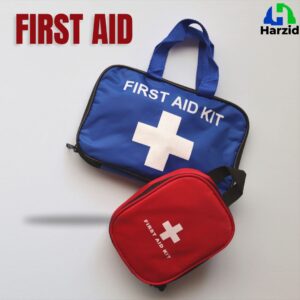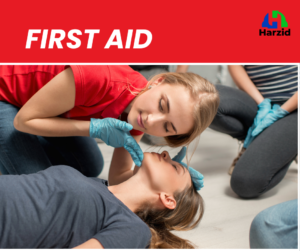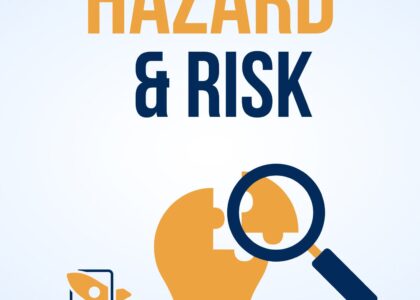
What is First Aid?
First Aid refers to the immediate care provided to someone who is injured or suddenly becomes ill, until full medical treatment can be administered, or the situation is under control. This can range from simple actions like applying a bandage to a cut, to more advanced procedures such as performing CPR (Cardiopulmonary Resuscitation) in the case of a stopped heart. (Wikipedia)
The main objectives of First Aid, often known as the “Three P’s,” are:
- Preserve Life: The top priority in any first aid situation is to save lives. This means offering crucial treatment and keeping the patient stable until professional medical assistance arrives.
- Prevent Further Harm: A key role of the first aider is to ensure the patient is protected from additional harm and to stop the injury or illness from worsening.
- Promote Recovery: First aid can also help in speeding up the recovery process, whether it’s by simply applying a bandage to a minor wound or performing life-saving techniques like CPR to restore normal body functions.
It’s essential to understand that first aid is not a replacement for professional medical treatment. Instead, it serves as a critical first response that can reduce the severity of injuries and improve the chances of recovery or survival.
In the workplace, first aid is critical for several reasons, especially given that accidents can happen at any time. Whether it’s a small cut, a fall, or something more serious like a heart attack or chemical exposure, the ability to respond quickly can make a huge difference. Here’s why first aid is so important in the workplace.

- Saving Lives
The most obvious reason first aid is important is that it can save lives. In some situations, especially with severe injuries or medical emergencies like cardiac arrest, the first few minutes are crucial. Immediate first aid, such as CPR or using an Automated External Defibrillator (AED), can double or even triple the chances of survival. Training employees to act quickly and efficiently during such critical moments could be the difference between life and death.
- Reducing the Severity of Injuries
In cases where injuries are less severe, first aid helps minimize the impact. For example, if someone cuts themselves, promptly applying a bandage and disinfectant reduces the risk of infection and speeds up the healing process. Proper handling of minor injuries can prevent them from becoming major ones. This ensures that employees recover faster, potentially reducing time off work.
- Promoting a Safer Work Environment
When employees are trained in first aid, it raises awareness about safety in the workplace. Knowing how to handle injuries, even minor ones, encourages people to take more precautions and act responsibly. Companies that invest in first aid training often report fewer accidents because workers become more conscious of potential hazards and are better equipped to avoid them.
- Complying with Legal Obligations
In many countries, workplace safety regulations require companies to provide first aid resources and training. Failing to meet these standards can result in penalties or fines. Additionally, having first aid measures in place reflects positively on the company, showing employees and clients that safety is a priority.
- Boosting Employee Morale and Confidence
When employees know that they are working in a safe environment where their well-being is prioritized, it can improve morale. Knowing that coworkers have the skills to assist in emergencies also helps create a sense of security and teamwork. This sense of confidence in the workplace can boost productivity, as employees are more focused on their work when they know help is readily available if needed.
- Minimizing Costs Related to Injuries
While serious workplace injuries can result in significant financial losses due to medical costs, workers’ compensation, and time off, even minor injuries can add up in terms of lost productivity and medical bills. By providing first aid immediately, employers can reduce these costs. First aid can often prevent the injury from becoming more severe, reducing both the medical expenses and the time the employee is away from work.
- Ensuring Quick Response in Remote Locations
For businesses in remote or hazardous locations, such as construction sites or factories, emergency services may not always be able to arrive quickly. In these situations, having employees who are trained in first aid is particularly important. They can provide essential care while waiting for professional help to arrive, potentially preventing the situation from becoming worse.
Conclusion
First aid is a simple but vital skill that can protect the health and safety of employees in the workplace. Its importance goes beyond just treating minor cuts or burns. It saves lives, reduces the severity of injuries, and fosters a safer, more confident work environment. Employers who prioritize first aid training and preparedness demonstrate a commitment to their employees’ well-being, which in turn can improve workplace morale and productivity.
Investing in first aid training and equipment isn’t just a legal obligation in many places—it’s an ethical one. Emergencies are unpredictable, but being prepared for them can make all the difference when they occur.





